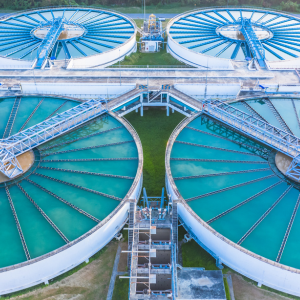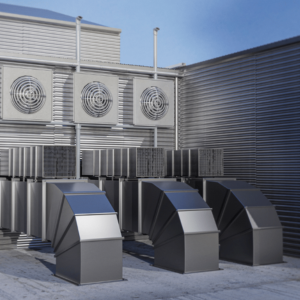UV lamps find diverse applications in various industries thanks to their ability to harness the power of ultraviolet light. UV lamps have become indispensable tools in ensuring safety and cleanliness, from water and air purification to surface disinfection in healthcare settings. They play an essential role in preventing the spread of harmful microorganisms, mitigating health risks, and safeguarding product quality in food and beverage production.
Moreover, UV lamps cure adhesives and coatings, sterilize equipment, and even detect counterfeit money through fluorescence. In a world where cleanliness and sustainability are paramount, UV lamps illuminate a path to a safer, more hygienic, and environmentally conscious future.
Water treatment is one of the major applications for
UV-C disinfection.
The process is used extensively to destroy pathogens’ infection capability in industrial wastewater, domestic wastewater, ballast water, and drinking water sources. Disinfection with UV-C light is highly effective; when pathogens such as bacteria, viruses, or molds are exposed to the germicidal wavelengths of UV light, their DNA is damaged, rendering them incapable of reproducing or infecting.
In the water industry, UV-C disinfection is considered a reliable and clean alternative to chemical disinfectants. It leaves no residue and can inactivate microorganisms such as protozoa resistant to chemical agents.

UV light technology is straightforward to install and maintain, cost-effective, and has long-term safety benefits for employees and communities close to water treatment plants. In addition, existing facilities currently using chemicals can be reverse-engineered to use UV light technology as their primary form of disinfection.
For many years, civil engineers have sought an alternative to using chlorine, ozone, or membrane technology as primary disinfection agents for municipal drinking water. UV-C light is a proven and safe alternative for primary disinfection with the added benefit of leaving no trace to affect the water’s taste, color, or odor.
Ultraviolet air disinfection is a highly effective way to destroy microorganisms, including viruses, bacteria, yeasts, and mold spores.
Airborne microorganisms such as these are especially prevalent in high-footfall locations such as hotels, airports, hospitals, theatres, and anywhere where food is prepared and served.
Disinfecting air using ultraviolet light within air ducts ensures the air stream and surfaces are exposed to germicidal wavelengths of light, which destroy or deactivate the genetic material in the microorganism, preventing replication.
Air purification using ultraviolet light is safe, economical, simple, and low maintenance. It, therefore, has many residential, commercial, and industrial applications, primarily within duct installations and room air sanitizers.

Air coolers are an essential part of many industrial HVAC systems, but mixing warm and cool air can lead to the formation of biofilms on the cooling fins of these devices.
UV disinfection units placed at the air intake of the cooler prevent the airborne bacteria from reproducing and eliminate biofilm formation.
Ultraviolet disinfection is especially important in the fight against SARS-Cov-2, the virus that causes COVID-19. In an environment where businesses and healthcare facilities work hard to mitigate the risks posed by COVID-19 infection, ultraviolet light is a key weapon in their armory.
For many industries, the ability to sterilize surfaces without chemicals is critical. Germicidal UV-C light, therefore, plays a vital role in these applications.
UV light disinfection is becoming key for sterilizing surfaces in operating rooms, ICUs, burn centers, patient rooms, and doctor’s offices – anywhere within hospitals and clinics where sterile environments are crucial to the welfare of patients and medical staff.

Ultraviolet disinfection is especially important in the fight against SARS-Cov-2, the virus that causes Covid-19.
In an environment where businesses and healthcare facilities work hard to mitigate the risks posed by COVID-19 infection, ultraviolet light is a highly effective tool for eliminating the virus on surfaces. Recent studies (including one by Boston University) have demonstrated the effectiveness of UV-C radiation for inactivating SARS-CoV-2.
UV-C disinfection is effective in not only deactivating the ability of bacteria, viruses, and other microorganisms to cause disease but also leaves no chemical taint that can affect the taste or aroma of food.
In addition, surface sterilization using UV-C light has been shown to improve the shelf life of some foods, such as meat and bread, and to delay the ripening of fruit, reducing post-harvest losses.